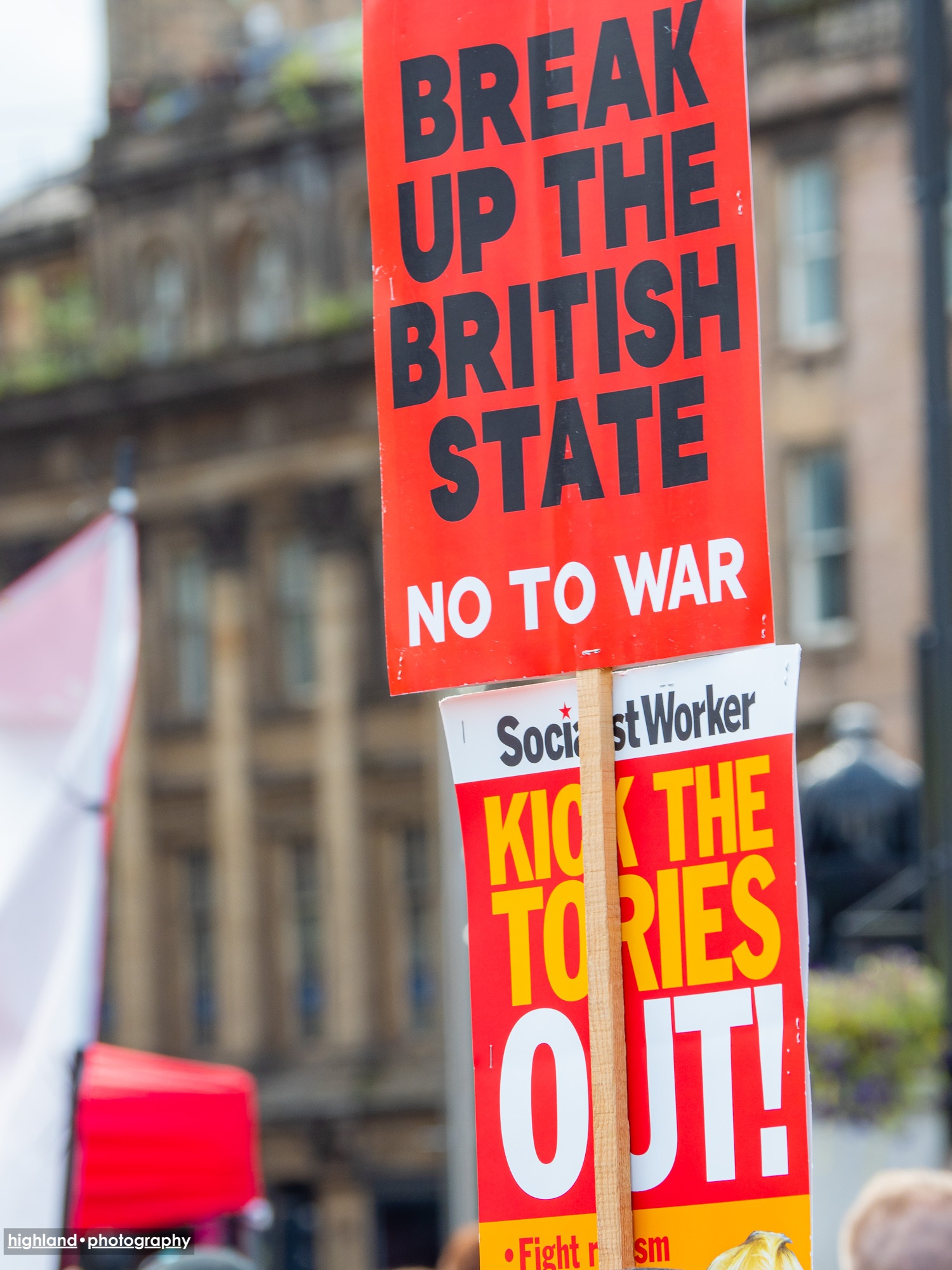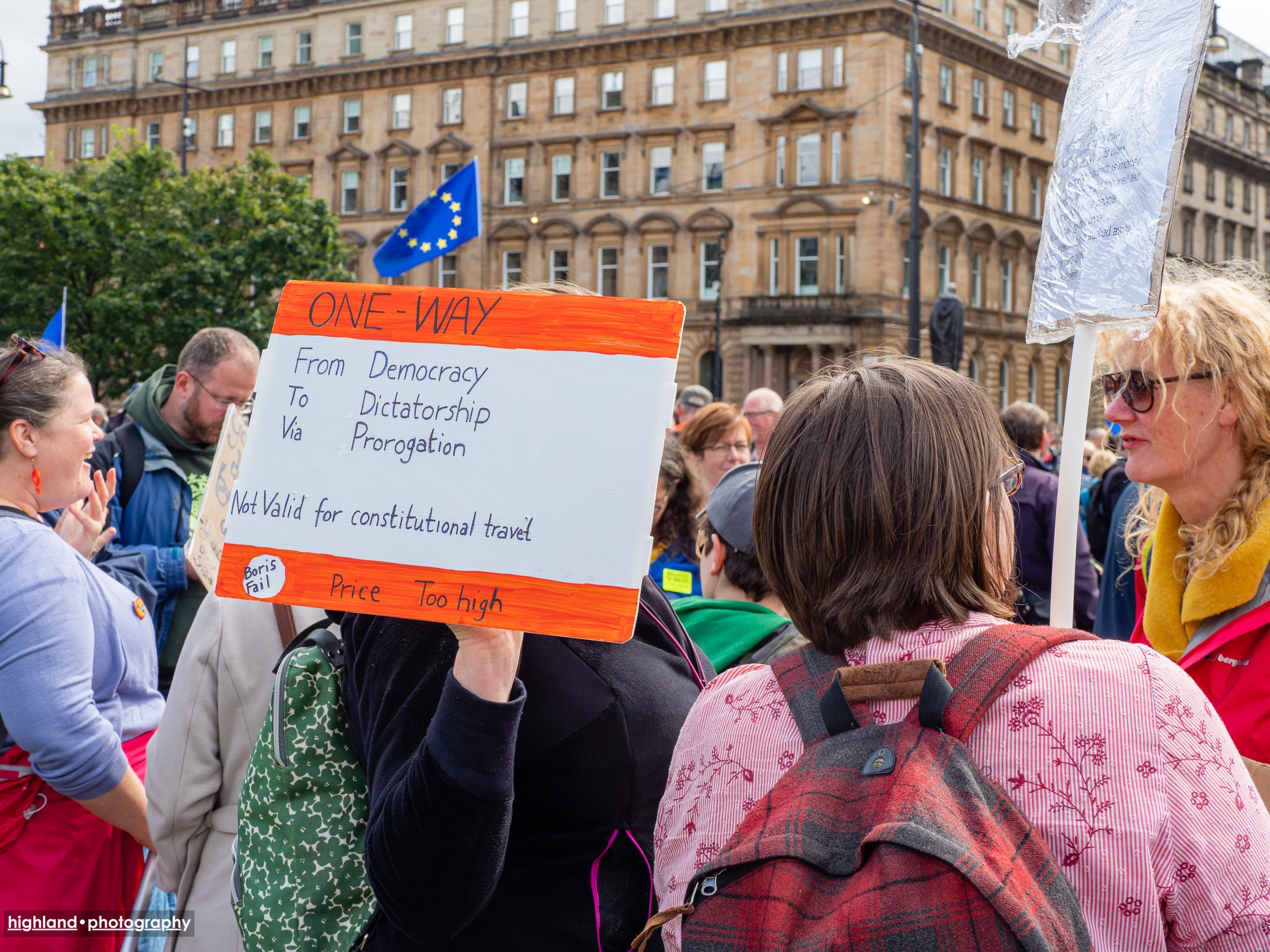[Update]: According to the latest YouGov poll, the swing to the pro-EU parties from the Con/Lab relics has been even bigger than I’d allowed for in this analysis. So head here for the latest pro-EU Scottish tactical voting recommendations. My previous recommendation was to swing to the SNP, but the figures now suggest that LibDem voters should stay where they are, and that any new swing voters should head for the Scottish Greens or indeed the SNP.
Voting based on the YouGov/TheTimes poll from the end of April would translate to 3 seats to pro-EU parties, 2 for pro-Brexit/anti-EU parties (1 Brexit and 1 Conservative) and 1 for Labour (whatever they are) – the d’Hondt model used in Great Britain is pretty robust in that regard, favouring smaller parties as the count progresses.
A tactical voting model that favoured the SNP at the expense of the Lib Dems and Change UK and the Brexit party at the expense of the Tories and (to a lesser extent) Labour, would give the Scottish MEP list 4 SNP seats, 1 Labour and 1 Brexit, a majority of 3 or 4 for pro-EU candidates, depending on whether Scottish Labour was neutral or pro-EU.
A tactical voting model that favoured the smaller parties (some Conservative and Labour to Brexit and Remain vote from Conservative, Labour and SNP to the LibDems, Scottish Greens and Change UK) would also give four seats to pro-EU parties (two SNP, one Green, one Lib Dem) but would lose Labour its seat, give the Conservatives one and make no difference to the one seat that the Brexit Party would have, thereby reducing the Pro EU majority on the list from 3 or 4 to 2.
There’s been much speculation about the pro-EU parties combining their lists (I think it’s too late for that now). However, changes to the list where the smaller parties came together to combine their lists (LibDem + Change UK, LibDem + Change UK + Scottish Green, then Brexit and UKIP combining votes) actually makes no difference to the overall outcome in terms of Pro/Anti-EU representation. What it would do is gain the centrist alliance a seat at the expense of the SNP.
An alliance of Change UK and the LibDems, using the YouGov figures, would likely achieve no net change: they’d gain a seat at the expense of the Greens.
However, the Scottish Greens on their own have at least a chance of a seat on their own (but only within a 5% sensitivity analysis), so their incentive for cooperation is perhaps limited. As a still largely issue-driven party, their vote is probably also less susceptible to tactical defection.
Now for the detail…
Intro
Once May’s deal was unceremoniously put to the axe, and even before its subsequent revenance as a Gregor Clegane-style zombie, it didn’t take much of an analysis to look at the numbers, the political dynamics and the players to conclude that, barring some deeply improbable couplings, both that Brexit was dead and that, like any good zombie, it was going to be a long time before the corpse stopped twitching.
That does seem to be playing out so far and, with the EU elections looming, our voting should reflect the fact that the EU will be part of our lives for the foreseeable future: we not only need to send a message that Brexit is an unacceptable act of national self-destruction but that we put representatives into the EU Parliament who will both be there full term and who can engage constructively to the betterment of Europe, for all its citizens.
Reflexive protest votes to the extremes, for parties that we we would normally cross the street to avoid, will do the EU, and therefore ourselves, no good whatsoever.
Equally, wishful voting for a party whose leadership might just come around to your view if you mumble enough hopeful incantations is a recipe for disaster (are you listening, Labour?).
Most tactical voting ‘advice’ that I’ve seen doesn’t address that long-term need, nor does it back up that advice with analysis, especially given the d’Hondt voting system used for these elections.
And Scotland is, relative to the rest of the UK, an outlier, where the single largest party is (and always has been) implacably Remain. Of course its focus is to Remain in Europe and leave the UK, but that’s something to debate later.
Patterns and Progress
The UK-wide Tory vote appears to be in free fall, with moderates in the party sidelined until they either walk out or civil war destroys the whole crumbling edifice. The Labour UK leadership has equivocated itself into a flat spin and, whilst it may not be in quite the death spiral of the Tory party, is heading for ground zero with some determination. In Scotland, that’s writ even larger – Labour imploded here even before Corbyn got his sticky paws on the party.
The Liberal Democrat vote appears to be on a significant rebound everywhere since their evisceration at the 2015 General Election. Their EU Election manifesto, “Bollocks to Brexit”, also leaves little doubt as to their position. They do however risk dilution of the centrist Remain vote against Change UK, whose general positioning is frankly indistinguishable from that of the LDs, albeit that they’re spending more time mumbling about a People’s Vote rather than resolutely opposing Brexit in any form.
It does then look as though there’s an irreducible 20-30% of the UK electorate who are likely to vote for Brexit, come what may (small ‘m’), even if that means voting for a party funded by unexplained means and which refuses to actually say what it stands for, beyond getting out of the EU, by any and all means, up to and including destroying the EU itself. These are those who are not receptive to evidence-based argument and who will allow fear, bigotry and existential angst to override anything that passes for common sense. So be it, and that covers the Brexit Party and UKIP vote. Whilst their figures for Scotland will doubtless be lower than in Englandshire, it’ll still be a substantial tranche of the vote.
But that does leave 70% or so of the electorate who fall in the spectrum from genuinely not knowing who to believe, who will vote against a crippling exit deal or will vote to Remain in the EU. The evidence there is that, as of a statistical 19 January, there is now a natural Remain contingent, across the UK as a whole. There always has been in Scotland.
Getting Tactical
Scotland has six EU parliamentary seats, elected on the d’Hondt system of preferential list-based proportional representation. Now what we have are candidates standing from the SNP, Conservatives, Labour, Lib Dems, Change UK, Brexit and UKIP parties, plus a couple of independent candidates.
Who then to vote for if you want a Britain (or Scotland) that actually functions as a modern trading nation and global influencer? The bottom line there of course is that we need constructive internationalists who will use the UK’s influence to support and reform the EU, not seek to tear it down from within, something that would delight messrs Putin and Trump. That’s the sort of support we – and democracy – can well do without.
You may be a fan of the EU or you may reluctantly accept that the best deal we can ever get is the one we already have – that doesn’t matter, the trick is to vote for representatives who, whilst they may not completely reflect your natural alignment, are close enough that you can live with the result, and see the UK playing its part against the rise of malign populism across the continent.
The problem of course is that the pro-EU Vote in Scotland is split across several more or less centrist parties – the Liberal Democrats, Change UK, the Scottish Green Party and the SNP.
From the perspective of someone who voted Remain in 2016, my question is whether or not having full candidate lists from the minor but explicitly Remain or Second Referendum parties standing against each other will cancel each other out? And, would voting for them allow additional representation of the Brexit parties (excluding Conservative and Labour) and what difference (if any) would the effect of various agreements to not stand make?
Method
So what I’ve done is to model a few scenarios against the current candidate list using the YouGov/The Times poll carried out on 29-30 April 2019, despite it having a truly pathetic unweighted sample size in Scotland of 152. However, it’s what we’ve got, albeit that I don’t recognise Scotland there from previous election results. Nor does this poll map well to the trends from the England and Northern Irish local elections.
I’ve looked at what happens if seats flip when there’s <5% difference between parties at any stage in the d’Hondt process – that only occurred with the base figures and didn’t in any case affect the outcome in terms of overall pro/anti-EU representation.
I’ve also modelled what could happen were the smaller parties to cooperate in various combinations in the Scottish EU list. These are:
- An outcome based on the list of candidates currently registered – every party running separately.
- What would happen if Change UK and the Lib Dems had a single combined list?
- What would happen if the Scottish Greens were to join Change UK and the Lib Dems in a single list?
- What would happen to 3 if Brexit and UKIP were to join forces?
Given that, at this stage in the game, we’re unlikely to see any changes to candidature, I’ve then modelled two tactical scenarios that diverge from the YouGov figures:
- What happens if voters abandon the smaller pro-EU parties in favour of the SNP, and the Conservatives in favour of the Brexit Party
- What happens if voters move to the smaller pro-EU parties from the larger parties who have pro-EU members, and from the Conservatives to the Brexit Party.
In all cases, I’m assuming a turnout of 45% (up from 33.5% in 2014 – not that it makes any difference, given that I’m not skewing by turnout).
Numbers & Results
Firstly, those polling intention figures, from YouGov, and the earlier poll from Survation, as well as the two tactical scenarios I’ve modelled:
And, for reference, here’s a summary of the Scottish voting outcomes from the 2014 EU Election, the last two UK General Elections and the 2016 Scottish Parliament Election:
Now for the end results. On the basis of the. YouGov figures, this is what we end up with in terms of seats, for the current list and for hypothetical combinations of the smaller parties:
Finally we have the two tactical scenarios and the resulting seats:
Conclusions
First of all, if we voted according to that YouGov poll, no alliances by the smaller parties would make any difference to the overall outcome: we’d end up with three pro-EU representatives, two anti-EU (Conservative and Brexit in all cases) and one who we simply don’t know how they’d behave (Labour) – for the purposes, I’m assuming that they’d either be pro-EU or still lurching around undecided.
Where there would be a difference is in the centre ground: On the basic YouGov the variability (within a 5% margin) is only about whether the Scottish Greens take a seat from the SNP or whether the SNP gains a seat from elsewhere.
When we start to look at the various party combinations, Change UK and the LibDems together would take a seat, to the disadvantage of the SNP and the Scottish Greens.
A Change UK, Lib Dem and Green alliance would also take a seat from the SNP, as they would in the event of UKIP and Brexit joining forces. Any alliance of UKIP and Brexit would make no difference to the outcome at all.
In all scenarios there’s a pro-EU majority of one seat, or two if we count Labour.
Then we move to the tactical scenarios: a reasonable swing from the smaller parties to the SNP (and a commensurate tactical swing to the Brexit parties) would give the SNP four seats, the Brexit Party one and Labour one, giving an pro-EU majority on the Scottish List of either three or four.
A swing to the smaller parties from the traditional majors (including the SNP) would likely give the LibDems and Scottish Greens a seat each, to the disadvantage of the SNP and Labour and the advantage of the Conservatives. So, whilst we’d end up with the same number of pro-EU representatives, we’d have an additional pro-Brexit seat and no Labour representation, reducing the majority of pro-EU representatives to two.
So, despite a personal view that would rather see a greater diversity of representation across the pro-EU parties, the best overall outcome in pro-EU terms is to vote SNP. And it looks as though, whatever we do tactically, there will be at least one pro-Brexit seat and possibly two, depending on how comprehensive the Conservative Cataclysm proves to be.
That said, I really do doubt the poll results, on the basis of sample size and recent and historical voting patterns, so please take all of the above with the pinch of salt of your choice.
So the orders of the day are:
- Vote
- Vote
- See 1.
- Vote tactically between the SNP, Greens, LibDems and Change UK, but beware of outsmarting yourself by going down too many rabbit holes trying to second guess the electorate.
- Be careful what you ask for.




One thought on “Tactical Scotland”